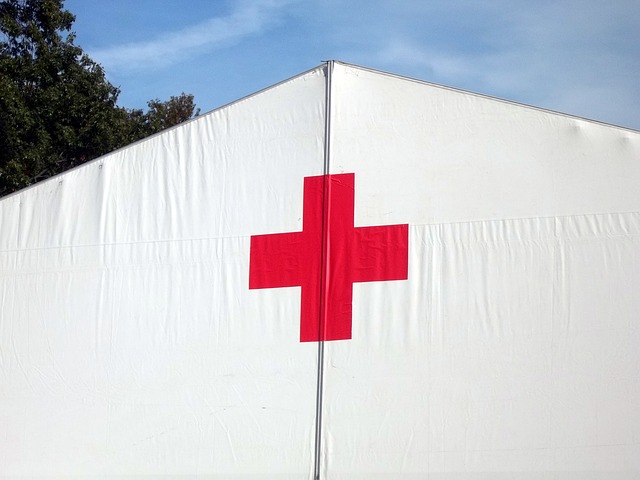
Just One More Fundraising Task....
12.30.2024 | Linda J. Rosenthal, JD

In the wake of hurricanes Harvey and Irma, there has been an overwhelming outpouring of generosity – of both spirit and money – to help the many in need. See Historic Disaster Response to Hurricane Harvey in Texas (September 22, 2017), FEMA.
There’s also been some chaos in the mechanics of the disaster-relief effort, as is usual for sudden and catastrophic events. However, with our 24/7 news cycle along with the phenomenon of instant communication via social media as well as the rise of ad hoc fundraising innovations like crowdfunding, the landscape of disaster relief is changing. No longer are agencies like The American Red Cross the only clearinghouse to receive donations and disburse help.
Recognizing that “[p]roviding aid to relieve human suffering caused by a natural or civil disaster or an emergency hardship is charity in its most basic form,” the Internal Revenue has issued Publication 3833 (Rev. 12-2014), “Disaster Relief: “Providing Assistance Through Charitable Organizations.
This 28-page online guide provides helpful information about the process. “By using this publication as you begin to plan your relief efforts,” the booklet opens, “you will be able to ensure that your program will assist victims in ways that are consistent with the federal tax rules that apply to charities.”
The focus is primarily – although not exclusively – on disaster-relief campaigns organized by well-established 501(c)(3) agencies that specialize in this work.
The IRS clearly favors using existing agencies to organize aid appeals, collect donations, and disburse the funds. For several reasons, these groups are “already well-equipped to administer a relief appeal. They –
By comparison, using an established relief agency is a much better funnel for aid than a system cobbled together by individuals acting on their own or through new organizations quickly hatched to meet the new and pressing disaster.
But the Internal Revenue Service makes clear that “… even if a charity was not specifically organized to provide disaster relief and such activities were not specified in its application for exemption, an existing recognized charity may engage in disaster relief activities without obtaining prior permission from the IRS. However, it must report this new activity on its annual return and may wish to report a change in its activities to the IRS Exempt Organizations Determinations Office.”
What’s clear also is that “in the immediate aftermath of a disaster or emergency, those who wish to provide help may overlook existing charities as long as they are prepared to spend precious time and resources establishing a new charitable organization and applying for tax-exempt status. This alternative is a much less efficient approach. Nevertheless, it is acceptable as a valid path for the general public who want to help. The agency offers instructions on how to start a new 501(c)(3) for this specialized purpose and how to request expedited exemption-application treatment.
Finally, the IRS suggests that there are better options than creating a disaster-relief organization from scratch. For instance, those wanting to help disaster victims may want to “combine resources with an existing charity to provide immediate relief, or see whether an existing charity operating in a related area may be interested in establishing a special program to address a particular disaster or emergency hardship situation.”
In addition to the detailed information in Publication 8388, there is also a relevant entry on the IRS website in the charitable organizations section. It’s titled “Disaster Relief: Standards for Charities That Provide Relief to Individuals”:
What are the standards for charities that provide disaster relief to individuals? One final caveat for qualification. While providing relief to victims of a disaster is a charitable activity because it aims to relieve human suffering, nevertheless, any group organizing an aid appeal must limit its benefits to a ‘charitable class.’ Thus, the organization must apply a needs-based test and maintain appropriate documentation.
The links on this website section include important definitions and guidance for both charities regularly involved in disaster relief or for those that want to participate on a short-term or otherwise limited basis.
On August 29, 2017, the Internal Revenue Service issued a special bulletin: IR-2017-137: “Beware of Fake Charity Scams Relating to Hurricane Harvey.” It begins:
While there has been an enormous wave of support across the country for the victims of Hurricane Harvey, people should be aware of criminals who look to take advantage of this generosity by impersonating charities to get money or private information from well-meaning taxpayers. Such fraudulent schemes may involve contact by telephone, social media, e-mail or in-person solicitations.
Sadly, the need for this information about how best to meet a community’s urgent needs for disaster support is not limited to Hurricanes Harvey and Irma, or to the remainder of the 2017 hurricane season. It applies to emergencies all year long around the nation including here in earthquake country.
– Linda J. Rosenthal, J.D., FPLG Information & Research Director
